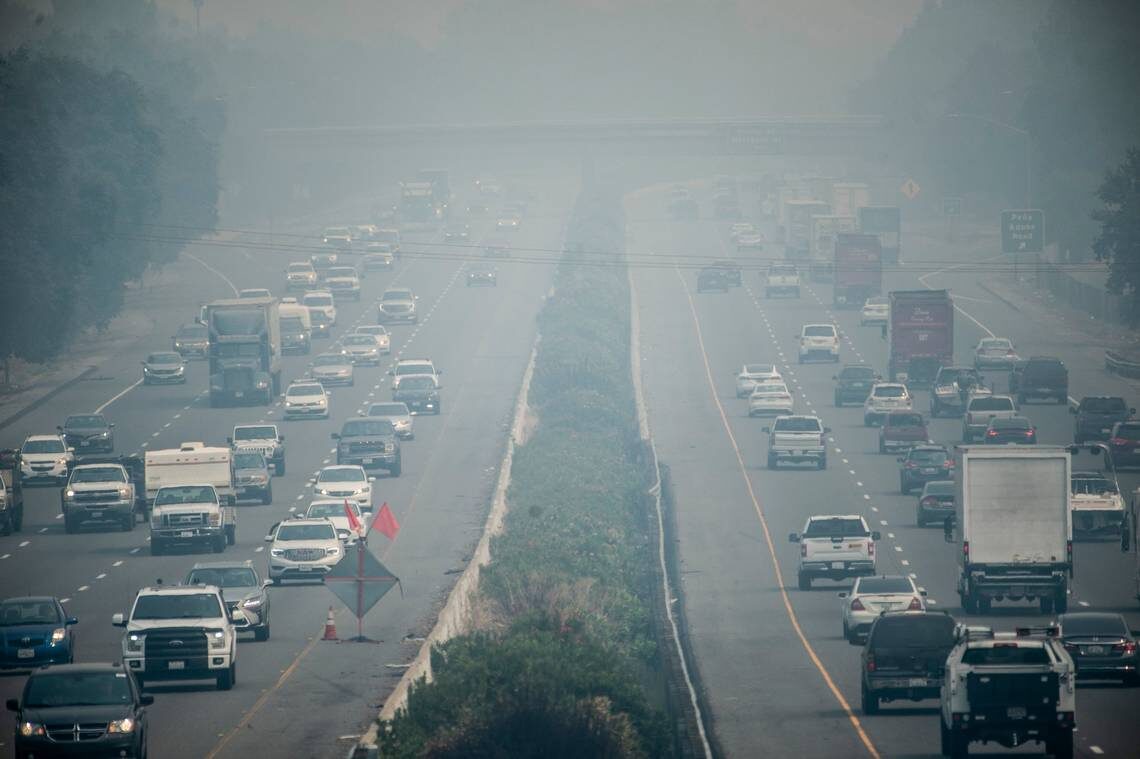
Nearly 30 people have died in California wildfires that have destroyed millions of acres and continue to burn into late September. For weeks, skies above the Golden State were soiled brown or an apocalyptic orange grabbing headlines of a state on fire.
But "the total cost in terms of human lives and health is likely far larger due to the immense amount of smoke that has been inhaled over the last 3 weeks by the very large number of people living on the West Coast," said researchers at Stanford's Center on Food Security and the Environment.
Massive amounts of smoke pumped out from California's infernos sent soot levels soaring across Northern California from Silicon Valley to Fresno and here in the Sacramento region, with lethal consequences, especially for the state's senior population, the researchers showed.
About 6 million Californians are age 65 or older. Using Medicare data, the researchers say dense concentrations of smoke between the beginning of August and early September contributed to some 1,200 deaths that would not otherwise have happened and 4,800 additional visits to hospitals' emergency rooms.
A single day of increased soot levels over the next month raises the death estimates to 3,000, the study estimated.
"These are hidden deaths. These are people who were probably already sick but for whom air pollution made them even sicker," Marshall Burke, deputy director of Stanford's Center on Food Security and the Environment, told the San Jose Mercury News.
The deaths were among those 65 or older. A majority had preexisting heart or respiratory conditions. And there are caveats from whether wildfire smoke has the same effect as overall particulate pollution to the relationship between air quality and the ongoing COVID-19 pandemic.
"Clean air is much more important than we realize," Burke told the Mercury News. "When you look at it on a population level, you can see very clearly that breathing clean air has huge public health benefits and breathing dirty air has disastrous consequences."
The Sacramento region, for example sat in the unhealthy range of 150-200 on the AQI for 10 days during a period ranging from Aug. 19 until Sept. 18. The air was unhealthy for sensitive groups on nine other days in that time-frame.
The potential health consequences of exposure to wildfire smoke can go well beyond the coughing, sore throats and the watery eyes that most Californians have experienced over the last few weeks.
Tiny particulate matter, undetectable to the human eyes, poses the greatest challenge to people's health both in the short term and years down the road.
"While the big particles are bad, they may not be quite so bad as the small particles, the PM 2.5," said Dr. Brian Christman, a national spokesperson for the American Lung Association, told The Sacramento Bee earlier this month. "They're about 1/30th the size of a human hair, and they're small enough that, when you breathe, they will just follow the wind all the way down to your smallest air sacs and they can lodge in your delicate lung tissues and cause a lot of inflammation."
There are estimates, he said, that 300,000 premature deaths worldwide are related to poor air quality due to wildfires.



R.C.